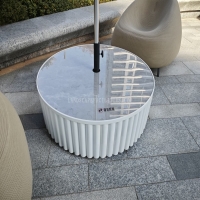Welcome to the website for landscape facilities products and knowledge.
How does marble perform in institutional settings?
Marble has long been a favored material in institutional settings due to its unique blend of durability, aesthetic appeal, and timeless elegance. Schools, hospitals, government buildings, and museums often incorporate marble into their designs to create an atmosphere of sophistication and permanence.
One of the key advantages of marble in institutional environments is its exceptional durability. When properly maintained, marble can withstand heavy foot traffic and retain its polished appearance for decades. Its resistance to wear makes it ideal for high-traffic areas like lobbies, hallways, and staircases.
Beyond durability, marble offers unmatched aesthetic versatility. Available in a range of colors and veining patterns, it can complement both traditional and contemporary architectural styles. Many institutions use marble to convey prestige, with grand entrances featuring marble floors or columns leaving a lasting impression on visitors.
Maintenance in institutional settings is simplified by marble's smooth, non-porous surface when sealed correctly. Regular cleaning and occasional polishing can preserve its luster without extensive upkeep. Additionally, marble's natural coolness makes it particularly suitable for warmer climates or spaces requiring temperature regulation.
From historic courthouses to modern university buildings, marble continues to be a symbol of institutional excellence, combining practical longevity with visual grandeur. Its ability to elevate spaces while standing the test of time ensures its ongoing popularity in public and institutional architecture worldwide.
Related search:

Recommendation
Round metal tube border design table with tempered glass or granite countertop on the top.